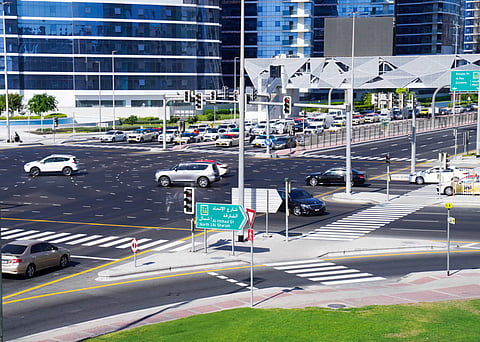Dubai’s RTA launches AI-powered traffic system to cut congestion by 20%
New traffic signal control system at intersections to improve journey times

Dubai: Dubai’s Roads and Transport Authority (RTA) has launched the next-generation traffic signal control system, UTC-UX Fusion, set to revolutionise traffic management across the city.
With an expected completion date in 2026, the system incorporates cutting-edge artificial intelligence (AI), predictive analytics, and digital twin technologies to improve traffic flow and reduce congestion at intersections by up to 20%, RTA revealed on Monday.
The upgraded system will be deployed across major intersections in Dubai, marking a significant leap forward in the city’s strategy to become a smart, sustainable metropolis. By optimising traffic movement and enhancing road network efficiency, RTA said the new system reaffirms its commitment to intelligent mobility solutions.
Hussain Al Banna, CEO of Traffic and Roads Agency at RTA, stated: “This project aligns with RTA’s vision as The World Leader in Seamless and Sustainable Mobility by improving journey time and reducing traffic congestion at intersections by 10% to 20%. It aims to enhance the travel experience for all road users, including motorists, public transport passengers, pedestrians, and cyclists, while also prioritising emergency vehicles and public transport.”
How will it help?
Reflecting on the capabilities of the system, Al Banna said: “The upgraded traffic signal system offers several advanced features, including predictive traffic analysis to dynamically optimise signal timings in anticipation of expected traffic movements, thereby enhancing overall traffic network efficiency. It also incorporates digital twin technology, allowing signal adjustments to be simulated and their impact assessed before actual implementation, while also enabling priority-based traffic management. Additionally, the system leverages data from future road sensors to further refine signal timings with greater efficiency.”
Real-time traffic changes
“The UTC-UX Fusion system dynamically adapts to real-time traffic changes by analysing data and making intelligent decisions to optimise signal timings. It also supports future technologies and initiatives, such as Cooperative Intelligent Transport Systems (C-ITS/V2X), which facilitate communication between smart vehicles and traffic signals to enhance traffic flow efficiency. This will play a key role in reducing journey times, improving traffic fluidity, and enhancing the overall mobility experience across Dubai,” added Al Banna.
AI-driven mobility
Earlier this month, Mattar Al Tayer, Director General and Chairman of the Board of Executive Directors of RTA, had said that AI-driven mobility could reduce travel time by 25% by 2035. AI could also cut congestion by 30% in the next 10 years, he said during his address at the Future of Mobility Forum at the World Governments Summit (WGS) 2025. “By implementing these trends, cities will transform, and Dubai is paving the way,” Al Tayer had said.
Sign up for the Daily Briefing
Get the latest news and updates straight to your inbox



